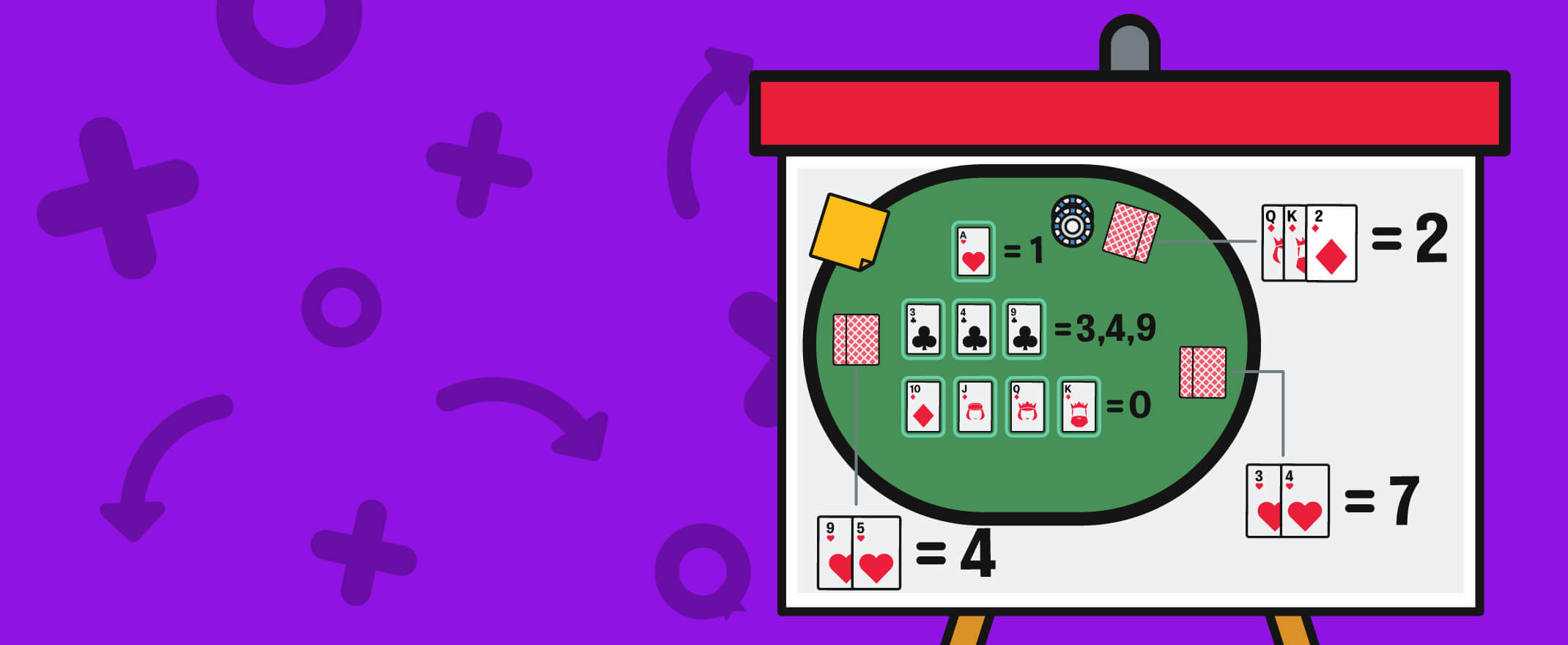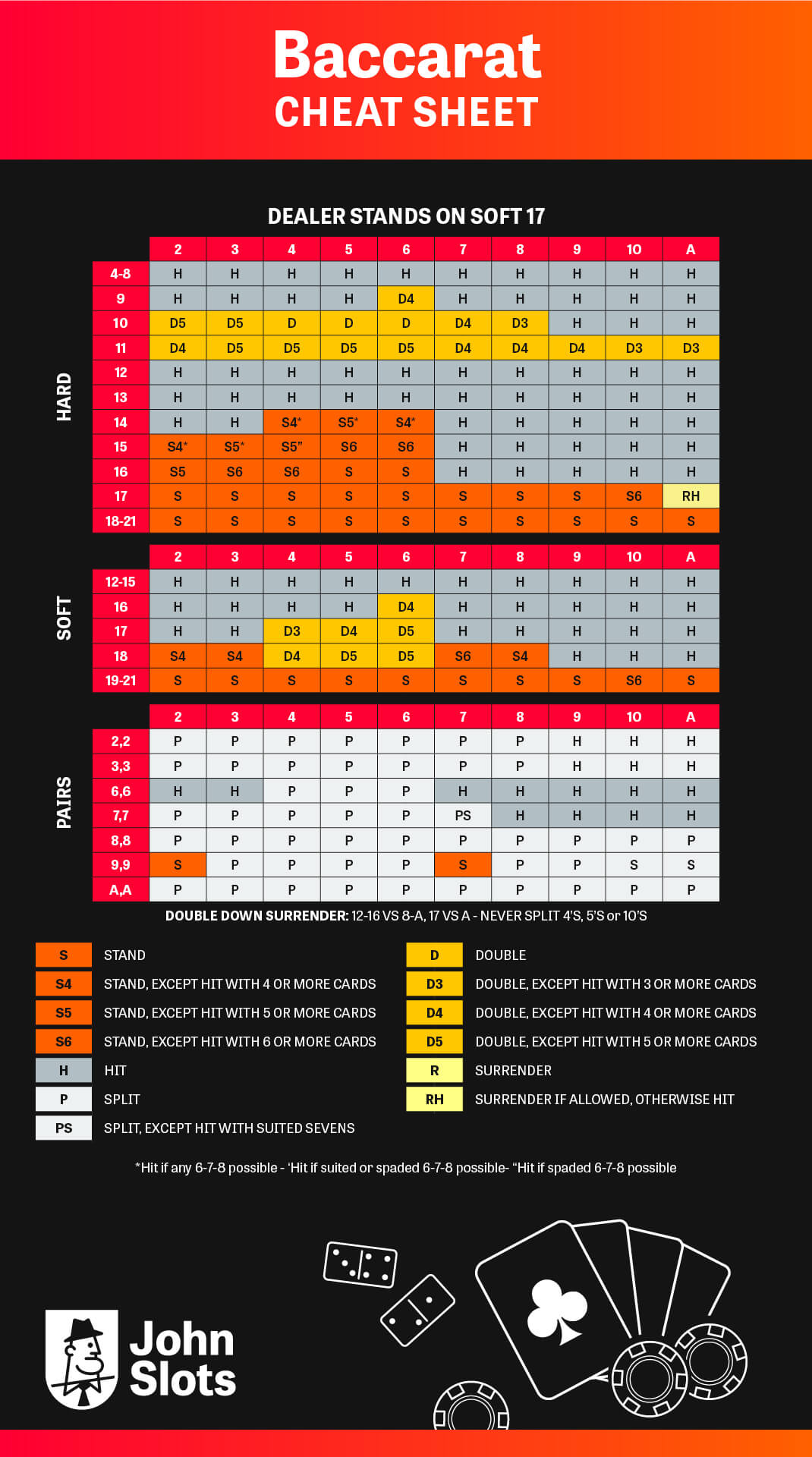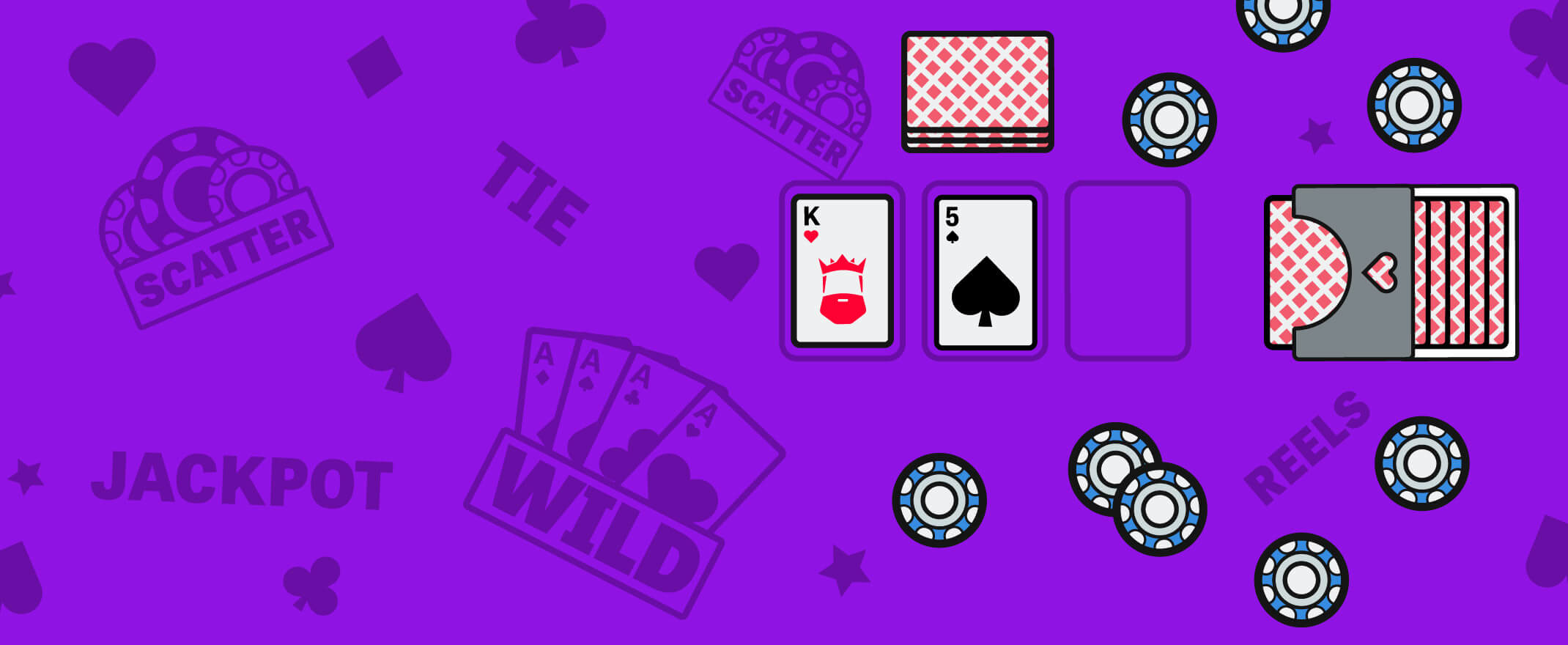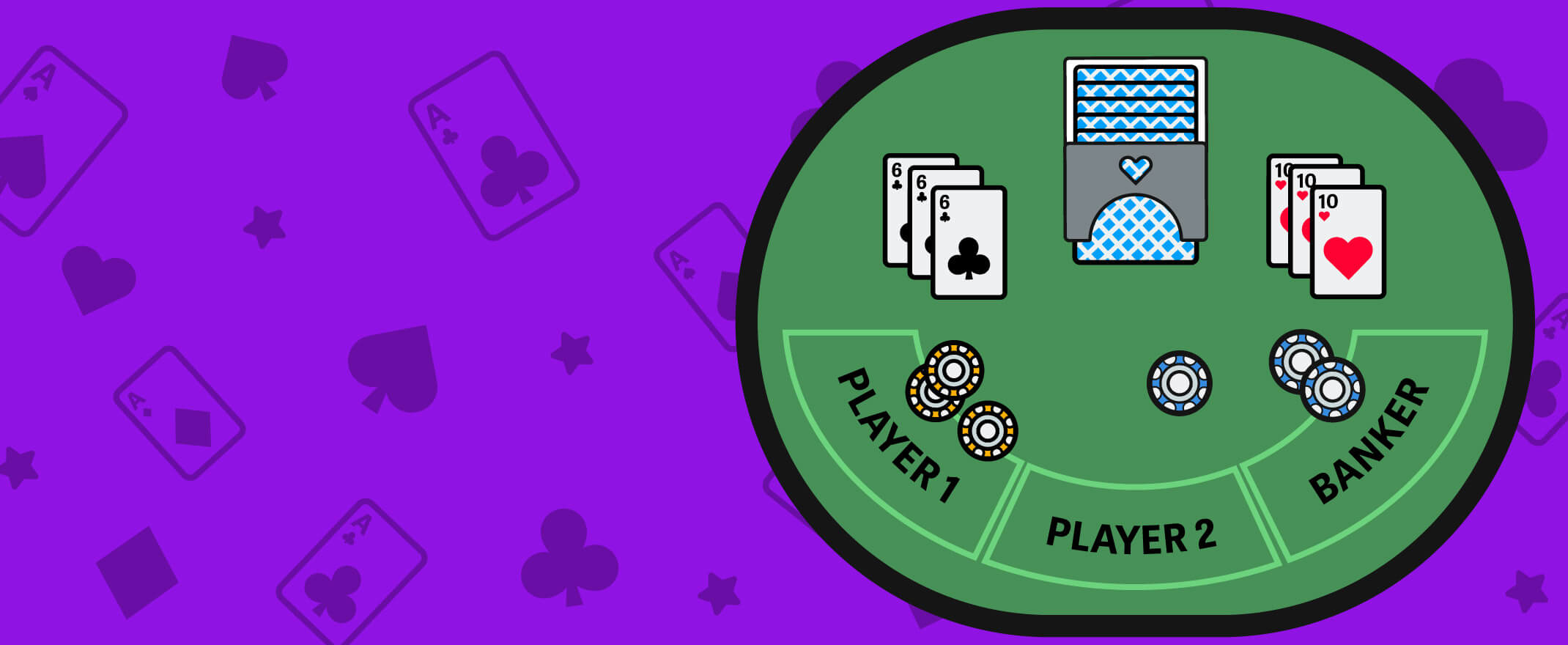Our guide to baccarat rules will be laying out all the important aspects of the game players should be aware of before they get started. We will be discussing the game’s objective, how to determine the value of cards, what actions player and Banker can take, and the terminology used during a game of baccarat.
Standard baccarat gameplay
First, it is important to identify what constitutes ‘standard’ baccarat. For the purposes of this guide, we will be assuming that American baccarat or Punto Banco, as it is also known, is the standard version.
This corresponds to the stance most casino game developers take so if you spot a game titled simply ‘baccarat’, it is safe to assume that it is a standard game following American baccarat/Punto Banco rules. With that in mind, let’s get started!
Baccarat is played with either 6 or 8 decks of standard playing cards. This is true for all variants of the game unless otherwise stated. There are multiple variations of baccarat available and most will share the majority of the standard rules with small deviations on one or two points.
A game of baccarat proceeds in the following order:
- The player makes a bet on what the outcome of the game will be. There are three options to bet on – a Banker win, a Player win or a Tie
- The dealer shuffles the cards before dealing two cards to the player and two to the Banker, face down
- The cards are turned over. Assuming neither participant has a natural hand (i.e. an automatic win), each can take action depending on the total value of their hand
- The objective of baccarat is to end with a value of 9. The participant with the hand closest in value to 9 is the winner
Table layout
If you had to play baccarat online and then play in a land-based casino, chances are you will have no trouble playing and vice versa. However, there are some small differences between the felt-covered casino table for baccarat and the online version.
At a land-based casino, there are multiple members of staff on hand to facilitate the game, which can accommodate up to 14 players at once around a large green table. For mini-baccarat games, the table is half the size and only one croupier is needed as there is only a maximum of 7 players at one time.
The table layout is fairly self-explanatory. The tabletop is marked with three large sections, one each for bets on the player, Banker or tied outcomes. On some tables, there are also outlined sections for the dealer to place the dealt cards in, identified as Banker and Player, which just makes it easy to see which cards are which.
Players place their chips on the section of the table corresponding to the outcome they would like to bet on and the game can proceed.
The layout of the virtual baccarat table is quite similar to the real one in that the player is presented with three sections to bet on. Of course, there are no other ‘seats’ at the table because the player is the only participant. The dealer’s duties are handled by the software.
In live baccarat, the experience is even more similar to the real one because multiple players can join the same game and in this case, the table will look identical to the type you would see in a land-based casino, complete with a live dealer.
The basic rules of baccarat
The objective of baccarat is simple enough – to make up a hand with a card value of 9 or as close to it as possible. To make up that card value, there are several things we need to keep in mind, namely how we determine card value and what actions, if any, participants can take during the game.

Baccarat card values
Card values in baccarat are very straightforward and easy to remember.
- Numbered cards 2 – 9: These cards are worth face value i.e. a 5 of diamonds is worth 5 points
- 10 and face cards: These cards are worth zero points. Face cards are the Jack, Queen, and King
- Aces: Aces are worth 1 point.
Hand values are based on the last digit of the sum of all the card values. For example, a player is dealt a 5 and a 9. Together, these add up to 14. The last digit is 4 so that is the value of the hand. In baccarat, the suits of the cards dealt are irrelevant.
Draws and stands
There are two actions that participants in a game of baccarat can take – draw or stand. When a player chooses to draw, an additional card is dealt, bringing the total hand size up to three cards. This is also referred to as a hit, i.e. we can say that the player hit for a card.
When a player stands, they indicate that they do not wish to draw and want to proceed with the game while holding the current value of their hand.
There are rules for when a participant can draw or stand and these are different for the Banker and the player. Let’s take a look at these rules next.
Player’s hand
The player’s hand determines how the game proceeds in that the Banker’s actions depend on whether the player has drawn or stood. The rules for the player’s actions are pleasantly simple:
- If the player has an initial total of 5 or less, they draw a third card
- If the player has a total of 6 or 7, they stand
Banker’s hand
The player always takes action first and the Banker’s options depend on which action that is. If the player stood (i.e. has two cards), the Banker follows the same initial rule as the player.
This means that if the Banker has a hand value of 0 to 5, they draw and if it’s a value of 6 or 7, they stand.
Things get more complex if the player has drawn a third card. Luckily, when playing baccarat, the dealer will handle all of these actions so the player doesn’t need to worry too much. However, it’s good to know what to expect so here are the rules the Banker follows if the player has drawn a third card:
- If Banker total is 2 or less, the Banker draws a card every time
- If Banker total is 3, Banker draws unless the Player’s third card was an 8
- If Banker total is 4, Banker draws if Player’s third card was a 2, 3, 4, 5, 6 or 7
- If Banker total is 5, Banker draws if Player’s third card was 4, 5, 6 or 7
- If Banker total is 6, Banker draws if Player’s third card was a 6 or a 7
- If Banker total is 7, Banker stands every time
Live baccarat rules
Once you have mastered the rules of standard baccarat, you can confidently play the game in any medium, including live dealer games. While the appearance of the game may be slightly different, thanks to the presence of a real dealer and other players, play proceeds in the same way as it would in a land-based casino and via online software.

How is the winning hand determined?
The winning hand is the one that is closest to the value of 9. When a player’s first two cards make up a value of 8 or 9, these are called ‘naturals’ and are automatically considered the winning hand. A 4 and a 5 or an 8 and a 10 are two examples of how a natural hand is formed.
Sometimes, the Banker and the Player hands are of equal value and this results in a tie. If the player bet on the Tie outcome, they would win.
Baccarat bets
There are three options a player can bet on in a game of baccarat, excluding any side bets. To keep things simple, we will be sticking to the standard bets for now and explaining what each one is all about.

Betting on Player
When a player bets on the Player, they are essentially making a wager on their hand beating the Banker’s. If the player’s hand is closer to 9 than the Banker’s, this is a win and the player will receive a 1:1 payout.
The house edge on a Player bet is 1.24%, which remains the same whether you are playing with 6 decks or 8. If you are playing with a single deck (a rarity), the house edge is 1.29%.
Betting on Banker
The Banker bet is the most popular with players because the house edge is slightly lower than the Player bet and much lower than the Tie bet. In a 6- or 8-deck game, the house edge is 1.06%. It is 1.01% in a single deck game.
The Banker bet pays out 19:20, which is almost even money but it factors in the house’s 5% commission charge. This is implemented because of this bet’s popularity with players thanks to its higher likelihood of occurring.

Betting on Tie
The Tie outcome is the most unlikely but it remains a tantalising option because of its 8:1 payout. It is so rare because it requires the Player and Banker hands to have exactly the same value.
The house edge on a Tie bet is, predictably, very high. In a 6-deck game, it is 14.44%. In an 8-deck game, it is 14.36%. In a single deck game, it is even higher at 15.75%.
Side bets
There are a multitude of possible side bets in baccarat but it is up to the casino/game developer which ones, if any, are offered. In standard baccarat, there are only three possible bets but below are a few examples of the side bets that are possible in variant games:
- Dragon Bonus: This is a bet on the size of the disparity between the winning and losing hand. The higher the win disparity, the bigger the payout. For example, a player might bet on a win disparity of 8, which means that the winning and losing hands must be at least 8 points apart.
- Even/Odd: This is a set of four side bets based on whether the final value of either of the two hands in play is even or odd
- Big and Small: This is a bet on the total number of cards in play, determined by whether the player hits or stands. If there are 4 cards on the table at the end of the game, the Small bet wins. If there are 5 or 6 cards on the table at the end, the Big bet wins
Pair bet
When making a pair bet, the player chooses either their own hand or the Banker’s hand and makes a bet on that hand being formed of a matching pair. The player can choose to bet on getting a pair themselves, the Banker getting a pair or both getting a pair.
The bet doesn’t specify the value of the cards, which can be two 10s, two 5s, two Aces or any other value, only that a pair is dealt. Remember, suits don’t matter in baccarat so the suits of the dealt cards are irrelevant.
Generally, casinos payout at 11:1 on this bet, which has a house edge of 10.36% to 11.25% for 8- and 6-deck games, respectively.
Summary
It’s no wonder baccarat has been a mainstay at land-based casinos for centuries now. And with modern technology bringing the game to our various screens, it continues to be a draw online as well.
With a few simple rules to remember but lack of exciting gameplay, baccarat is easy to learn and players can quickly improve their skills with practice and by continuing to expand their knowledge of strategy.

Frequently asked questions about baccarat rules
Below are some of the most commonly asked questions about baccarat and how its rules work in practical situations.
What are the card values in baccarat?
Baccarat card values are easy to remember. 2-9 number cards are worth their face value. Face cards (King, Queen and Jack) and the 10 are worth zero. The Ace is worth one point.
Do suits matter in baccarat?
No, not at all. A 10 of hearts is worth exactly the same as a 10 of spades or diamonds, and the same goes for the entire deck. It’s the value that matters the most.
What is the best baccarat hand?
A hand worth 8 or 9 points is automatically the winner in baccarat. It doesn’t matter which cards make up this value but these two outcomes are called naturals and they will end the game.
Should I bet player, banker or tie?
Beginners will be best off betting on the Banker as it this outcome is slightly more likely. However, it is up to the player to decide how to bet in each situation.
What is the best bet at baccarat?
Despite the commission charged, the Banker is the best bet when we consider the maths, which shows us a lower house edge on this bet.
Where can I see the rules of different baccarat variants?
There are many good quality online resources to learn about the many baccarat variations out there. Head to our Guides section for more information from JohnSlots.
What is the house edge in baccarat?
The house edge is the advantage that the house (or casino/operator) has in every casino game, whether it is slots or poker. In baccarat, the house edge is lower than many other games but it does vary depending on which of the three main bets the player chooses. The lowest house edge is on the Banker winning while the highest is on the Tie.
How many players are around the baccarat table?
Baccarat tables at land-based casinos can usually accommodate about 14 players at one time, as well as the staff members needed to manage the game. Mini baccarat games are smaller, hosting some 7 players at once.
Online Baccarat Expert
5+ Years of Experience

Psychology
21 Articles
Archer Mendoza Zheng, an expert in online baccarat, shares winning strategies and in-depth knowledge to help players succeed. With a comprehensive understanding of the game’s intricacies, he guides players through the rules, strategies, and advanced techniques. Archer’s expertise empowers players to enhance their baccarat skills and achieve remarkable success in online casinos.
Expert On:




